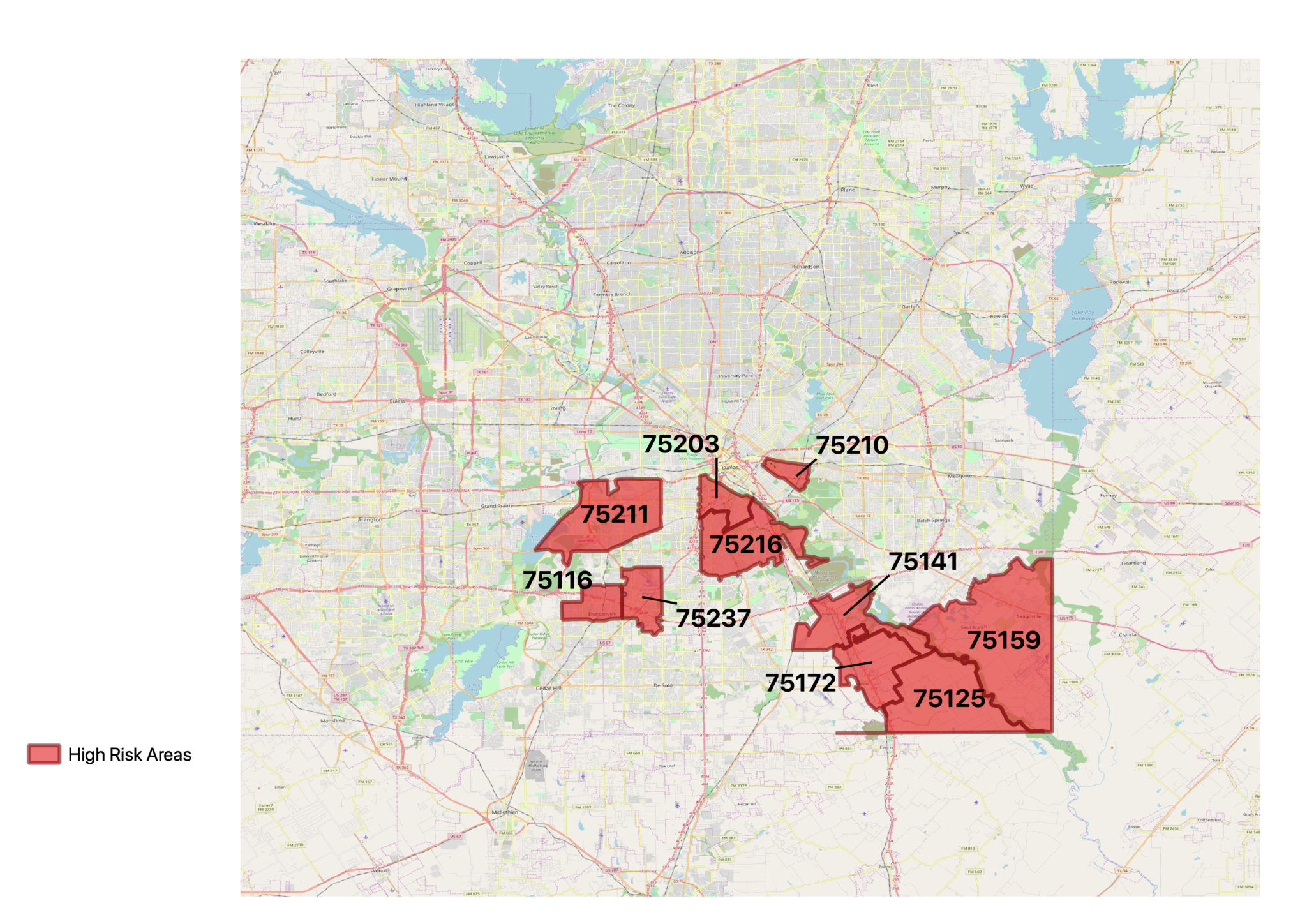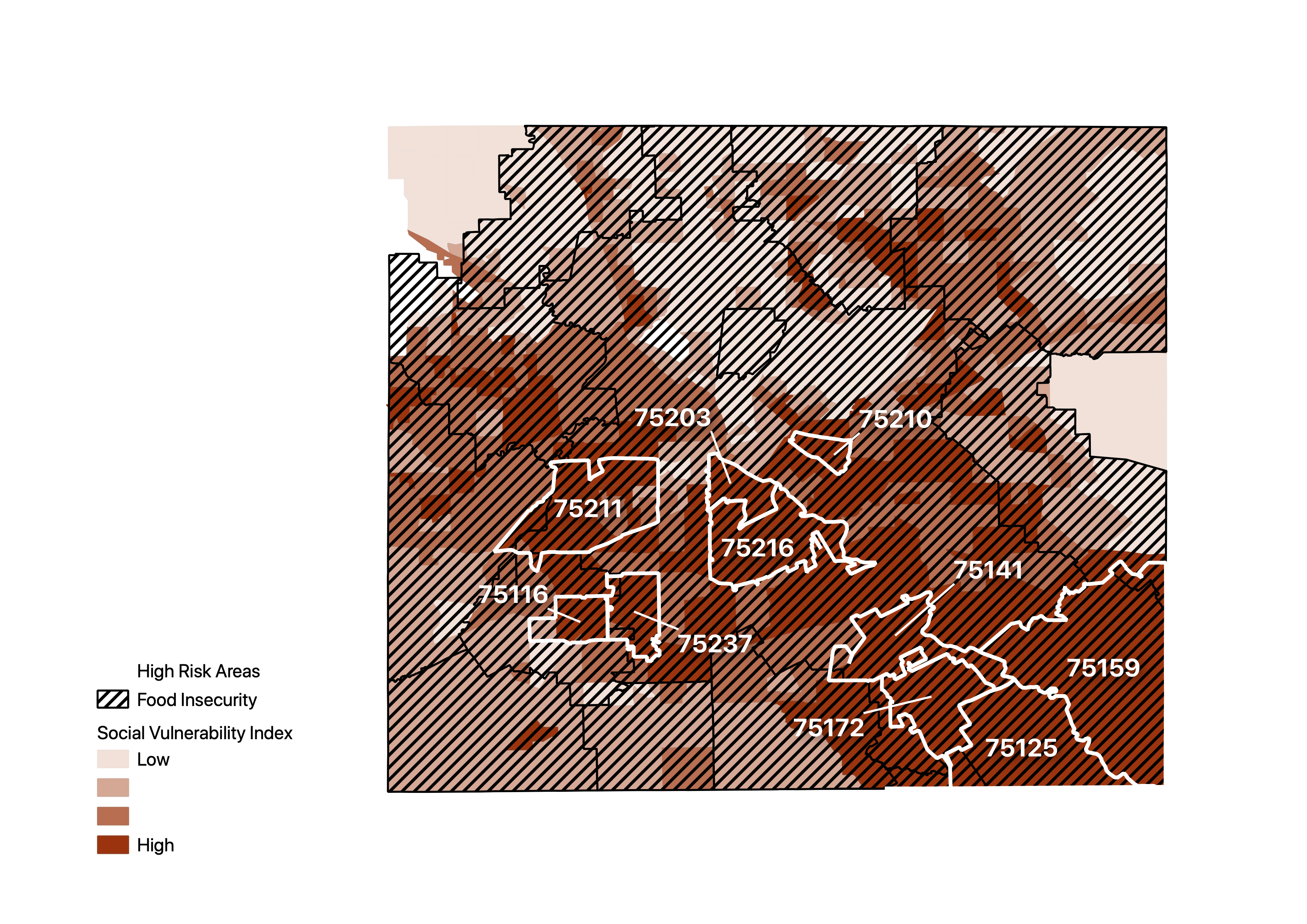Food is one of the most basic needs, yet many families routinely struggle to access it. As of 2017, around 1 in 7 Texans reported experiencing food insecurity. With unemployment rising and many families losing income due to the COVID-19 pandemic, this number has surely increased in recent months. Even if this spike in food insecurity is temporary, the impacts of lacking consistent access to nutritious food can be long-term, and those who experience them will need lasting support.
Dallas County Food Insecurity Maps. CHILDREN AT RISK (2020)


Food is one of the most basic needs, yet many families routinely struggle to access it. As of 2017, around 1 in 7 Texans reported experiencing food insecurity. With unemployment rising and many families losing income due to the COVID-19 pandemic, this number has surely increased in recent months. Even if this spike in food insecurity is temporary, the impacts of lacking consistent access to nutritious food can be long-term, and those who experience them will need lasting support.
Children are especially vulnerable to the impacts of food insecurity. Lack of access to consistent, quality food can increase a child’s risk of developing health conditions such as anemia, diabetes, high blood pressure, and obesity. Families experiencing food insecurity often report having to choose between food and other necessities, like medical care, utilities, and housing, which can impact a child’s mental and emotional health in addition to their physical health. Given the array of challenges that food insecurity creates, it is unsurprising that children who experience it are also more likely to struggle in school.
Typically, schools have been a key support system in addressing this issue. Over three million students in Texas are eligible for free or reduced meals through federal meal programs. For many of these children, the breakfast and lunch provided at school may be the only meals they receive all day. With schools closed for the foreseeable future, however, these children are likely struggling to find their next meal.
Many school districts have continued distributing meals during the pandemic and many food banks have ramped up their services to meet the sudden increase in demand. Nevertheless, any number of hurdles may prevent families from accessing these resources. Families who are experiencing food insecurity for the first time may not know what resources are available to them or where to look. Even families who are actively seeking resources may struggle to find them due to language barriers or a lack of Internet access. And those who find the resources they need may still fail to access them due to conflicting work schedules, lack of transportation, or health concerns.
Clearly, more support is needed to protect families throughout Texas from the harmful effects of food insecurity. Pandemic EBT will be a crucial resource in the coming weeks, allowing children who are eligible for free or reduced meals at school to access these meals in other ways. Schools, food banks, and other support systems are continuing to adapt to meet the needs of their communities. In the meantime, however, it is crucial that we identify where the greatest impact of food insecurity is being felt so we can begin to allocate additional resources and support to those most in need.
Click on one of the buttons below to view the COVID-19 Food Insecurity Map for your county!
Stay Informed
Sign up for our email newsletters for updates during the interim, our latest research, policy analysis, and ways you can get involved!